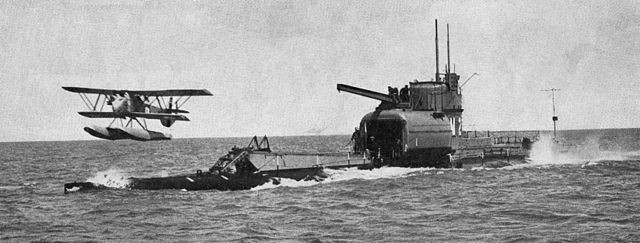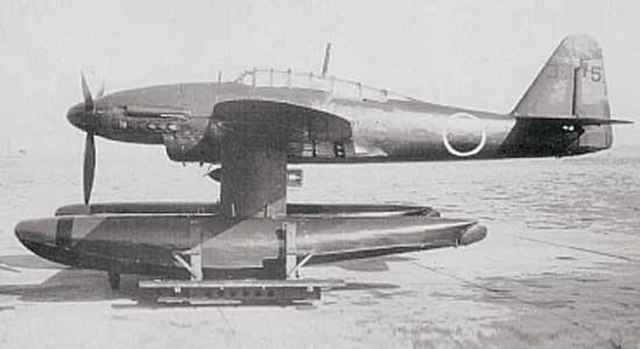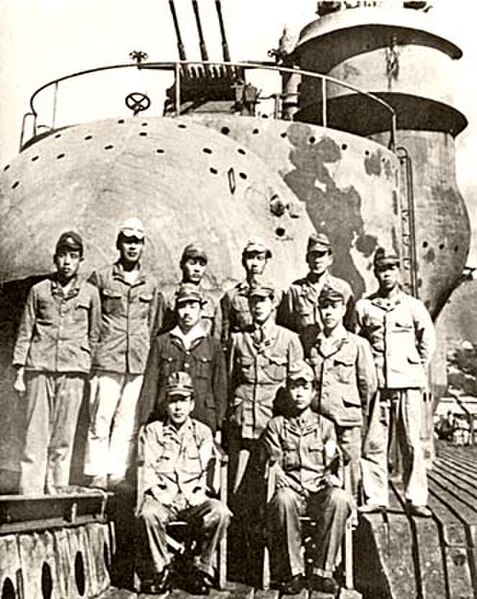Submarine aircraft carrier
A submarine aircraft carrier is a submarine equipped with aircraft for observation or attack missions. These submarines saw their most extensive use during World War II, although their operational significance remained rather small. The most famous of them were the Japanese I-400-class submarines and the French submarine Surcouf, although small numbers of similar craft were built for other nations' navies as well.
HMS M2 launching her Parnall Peto seaplane
SM U-12 with a seaplane on deck
French submarine Surcouf
Italian submarine Ettore Fieramosca
The I-400-class submarine Imperial Japanese Navy (IJN) submarines were the largest submarines of World War II and remained the largest ever built until the construction of nuclear ballistic missile submarines in the 1960s. The IJN called this type of submarine Sentoku type submarine . The type name was shortened to Toku-gata Sensuikan . They were submarine aircraft carriers able to carry three Aichi M6A Seiran aircraft underwater to their destinations. They were designed to surface, launch their planes, then quickly dive again before they were discovered. They also carried torpedoes for close-range combat.
I-401, with its long plane hangar and forward catapult
The Aichi M6A Seiran
Officers of I-400 in front of the plane hangar, photographed by the US Navy following the surrender of the submarine at sea, one week after the end of hostilities.
Members of the US Navy inspecting the plane hangar of I 400.








